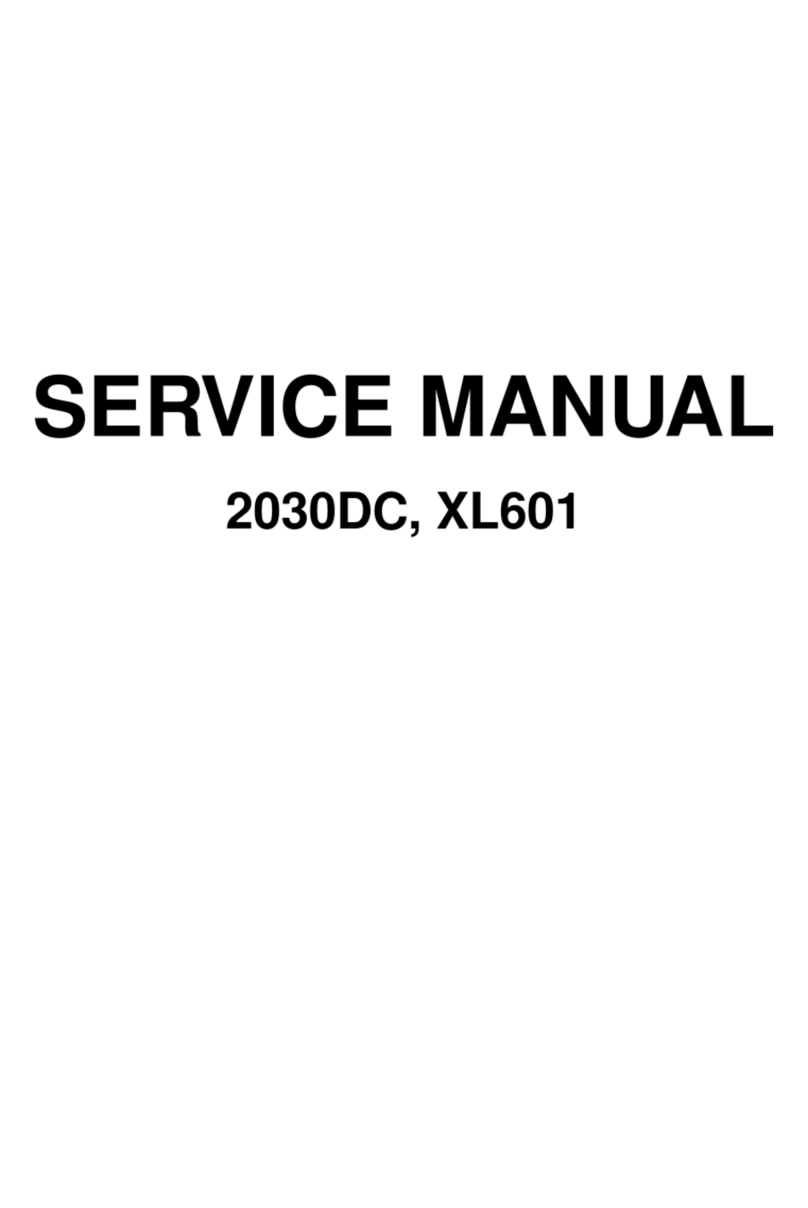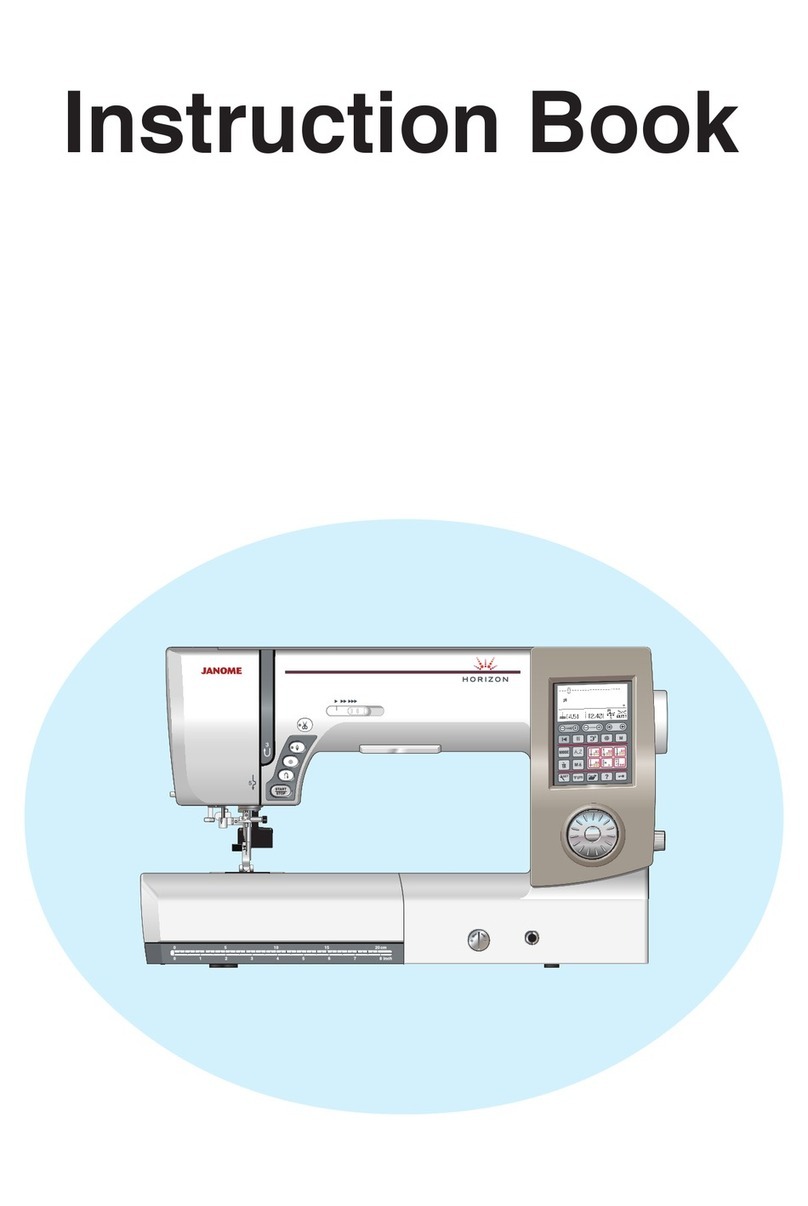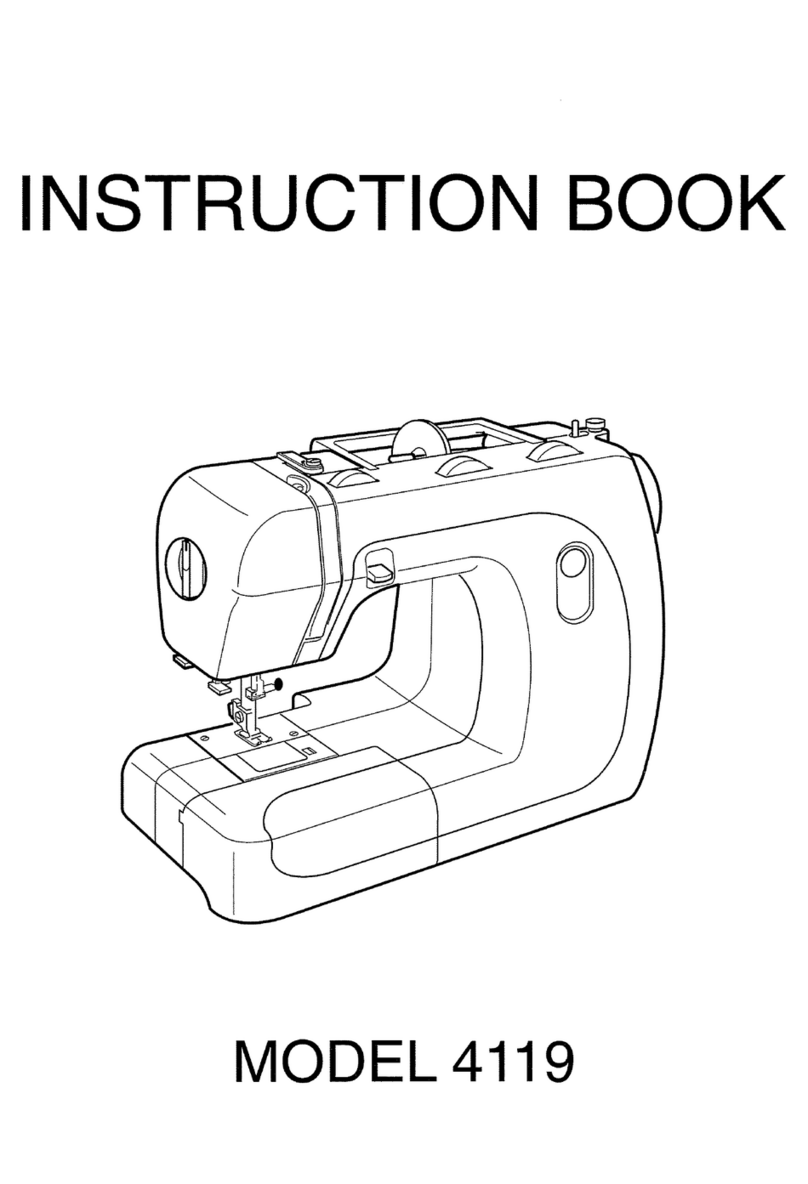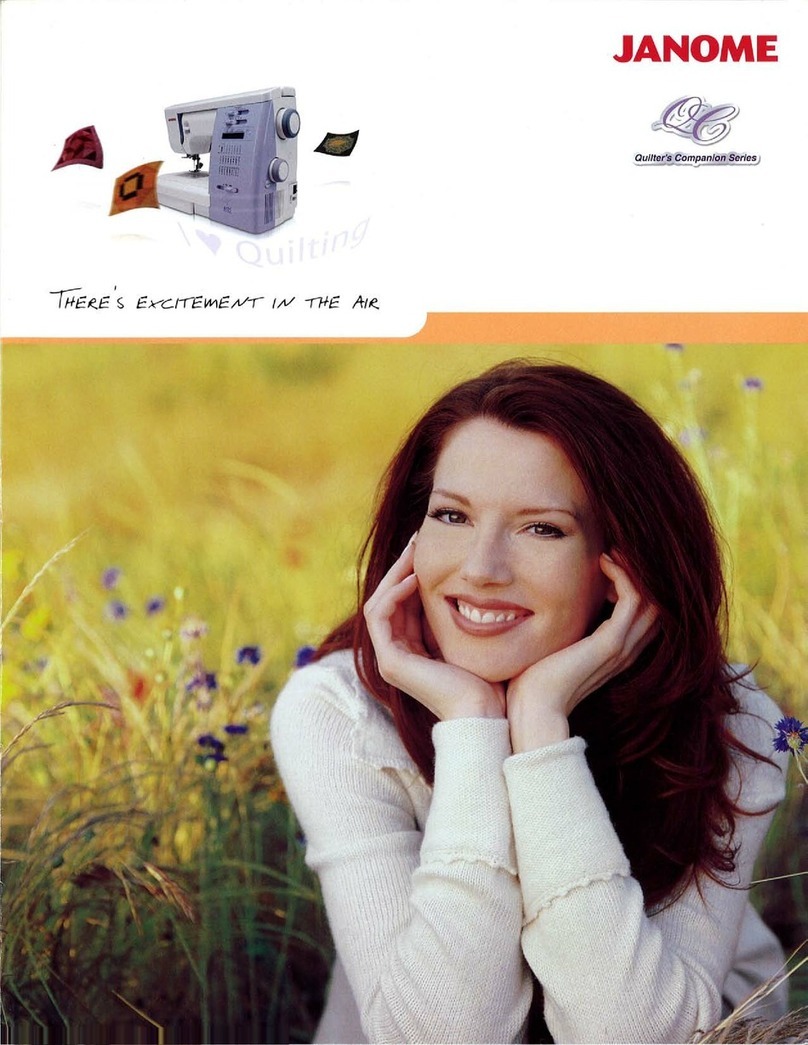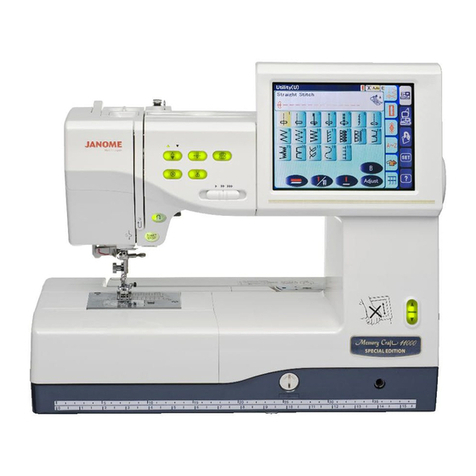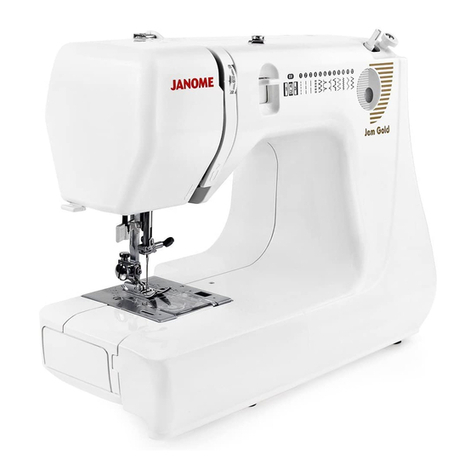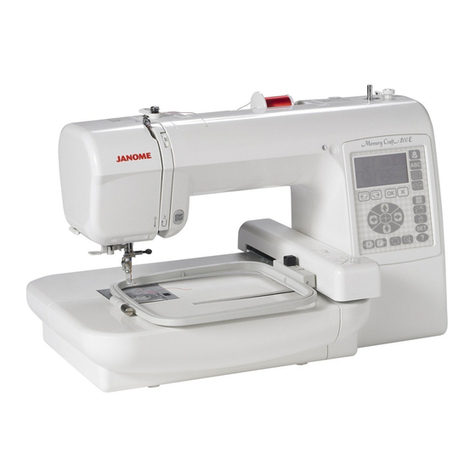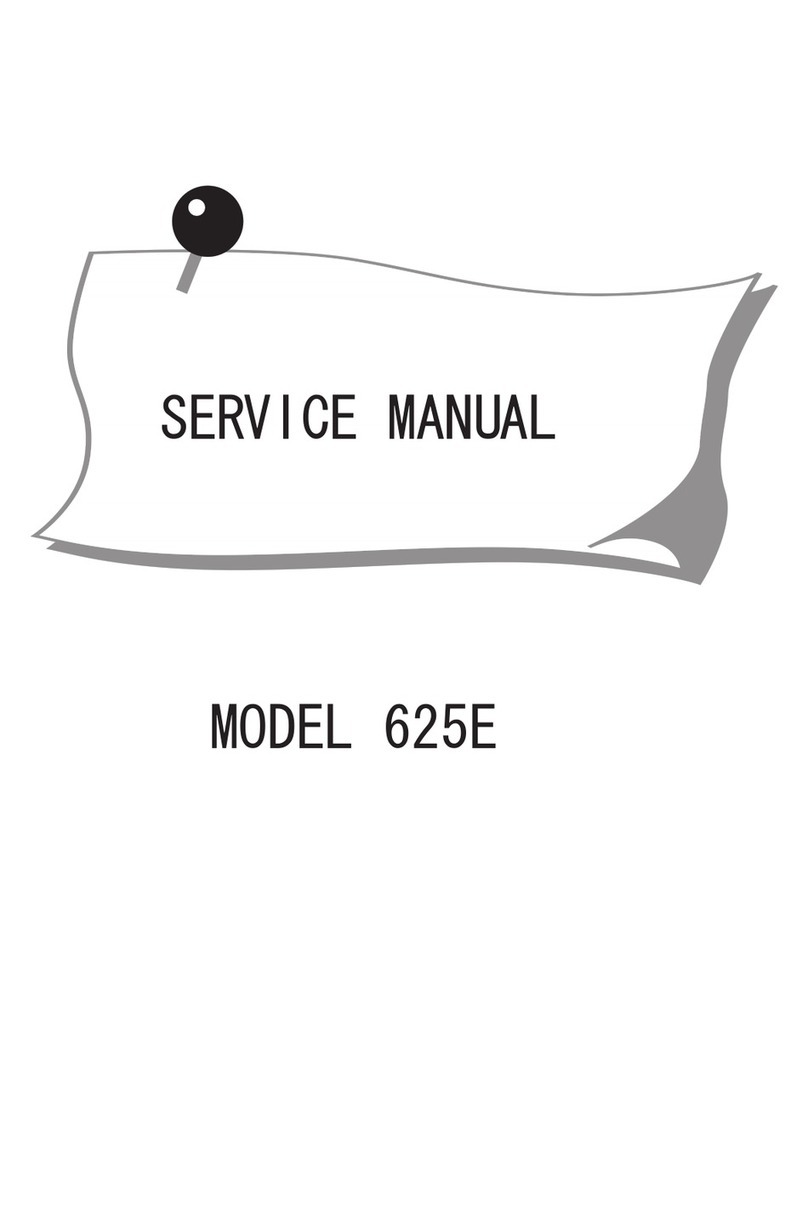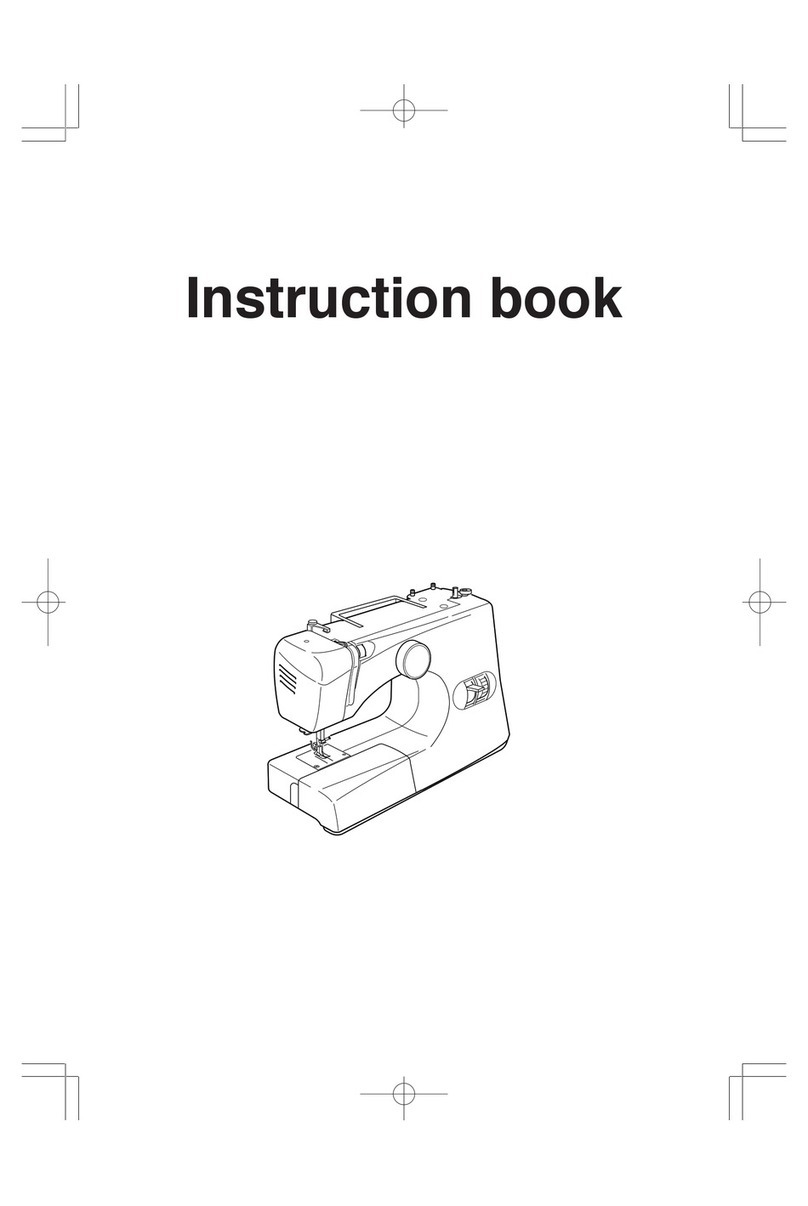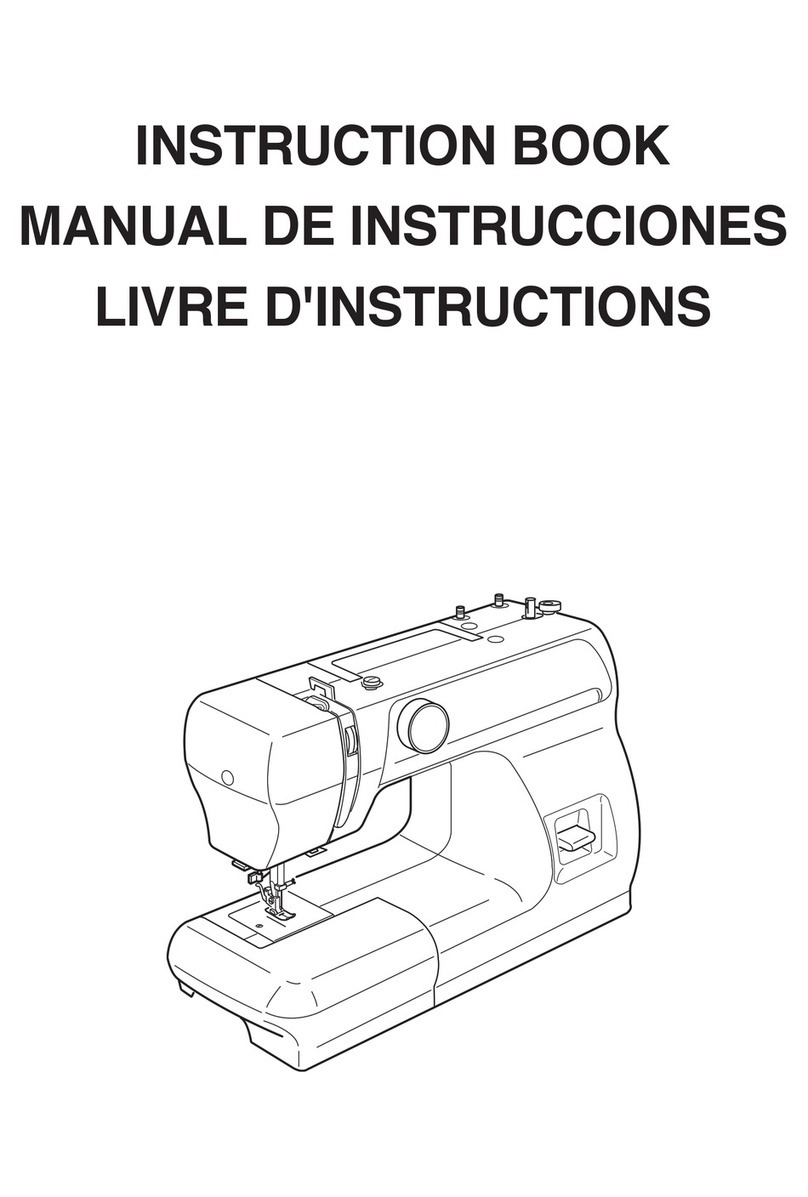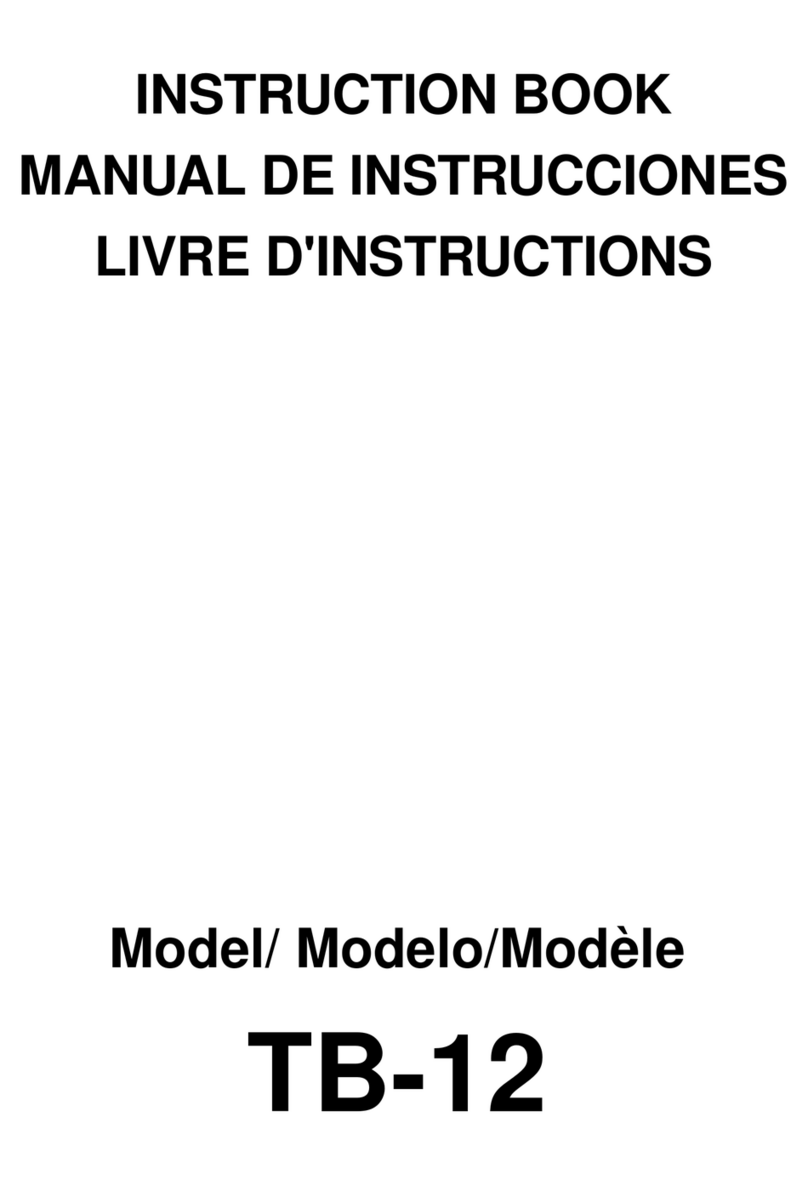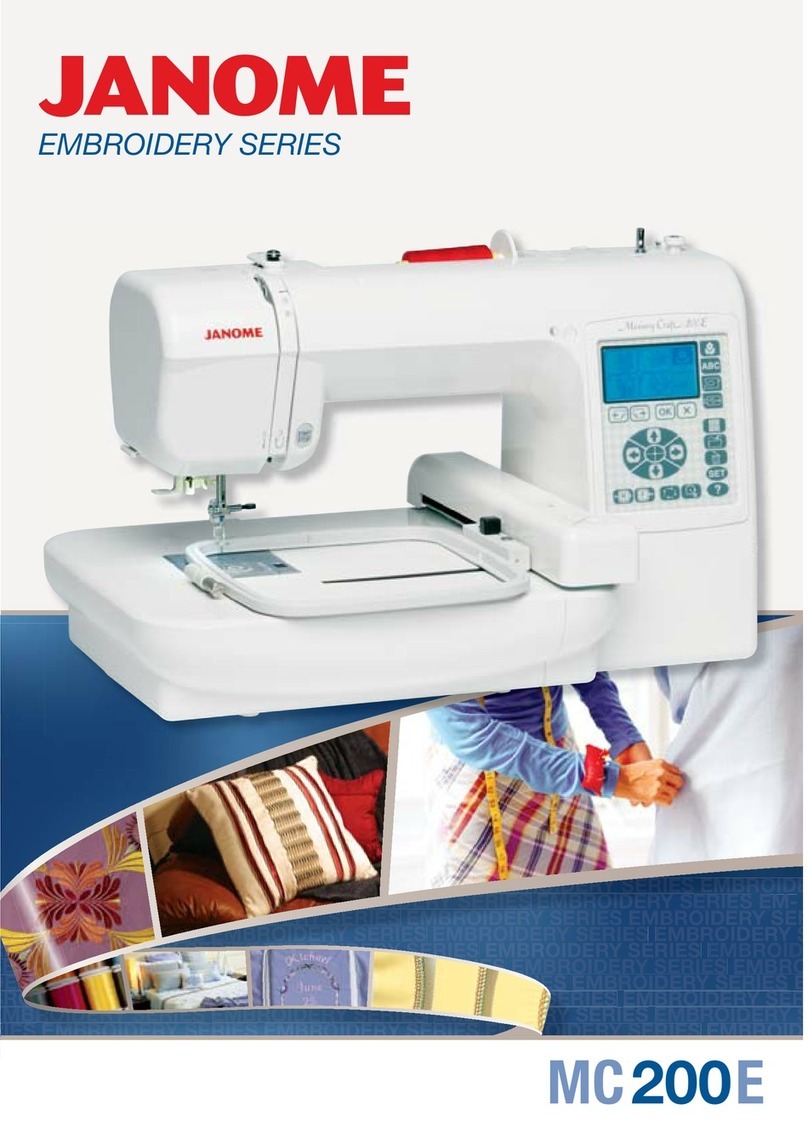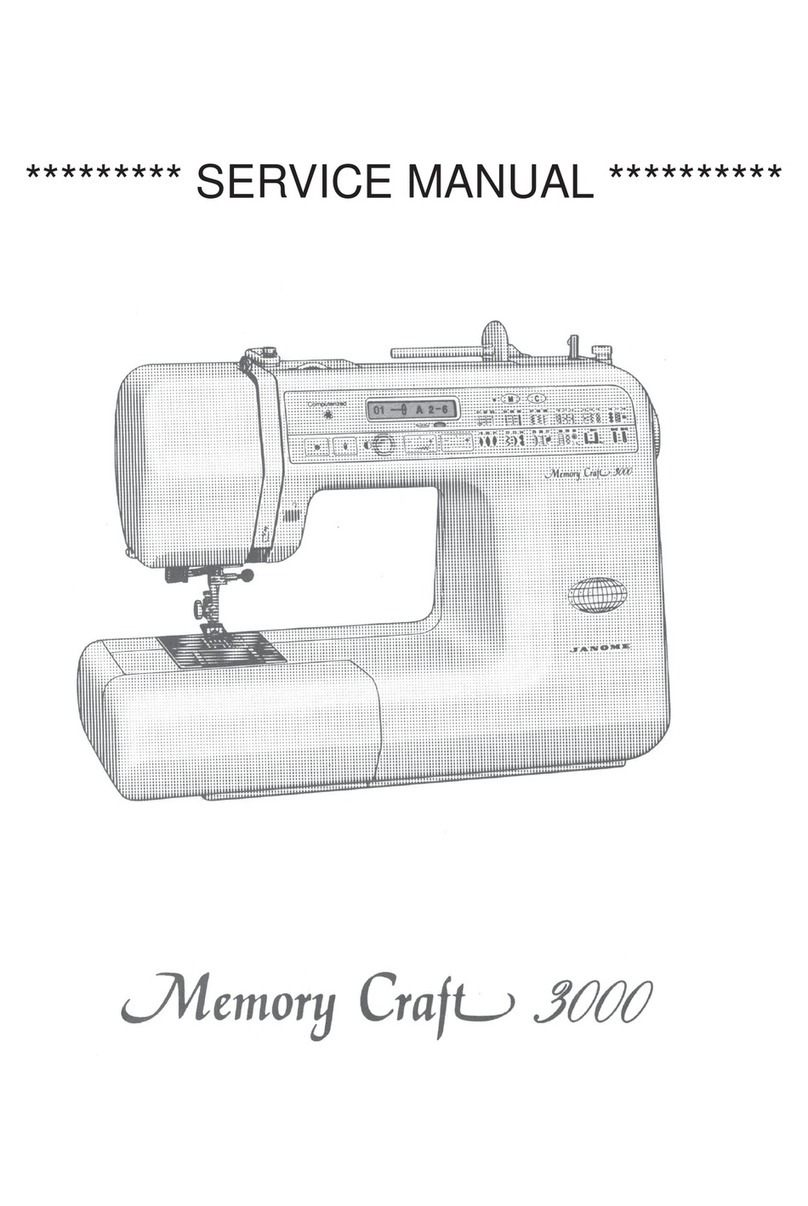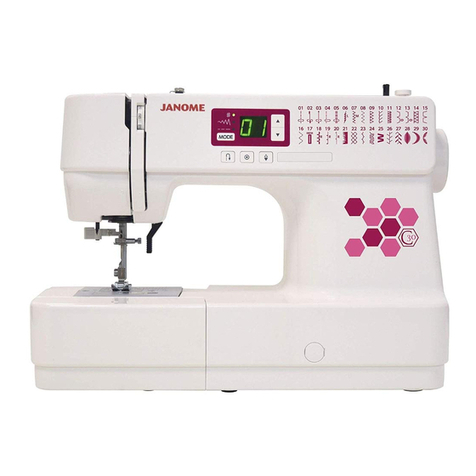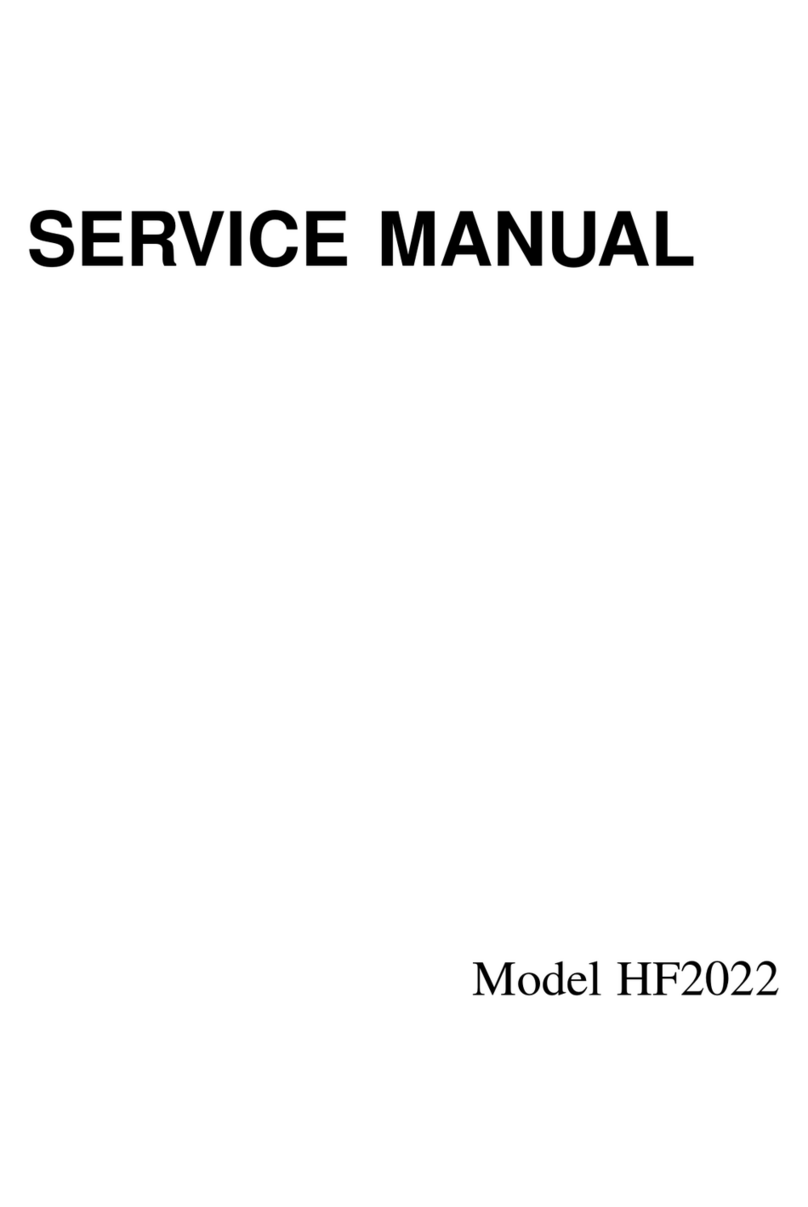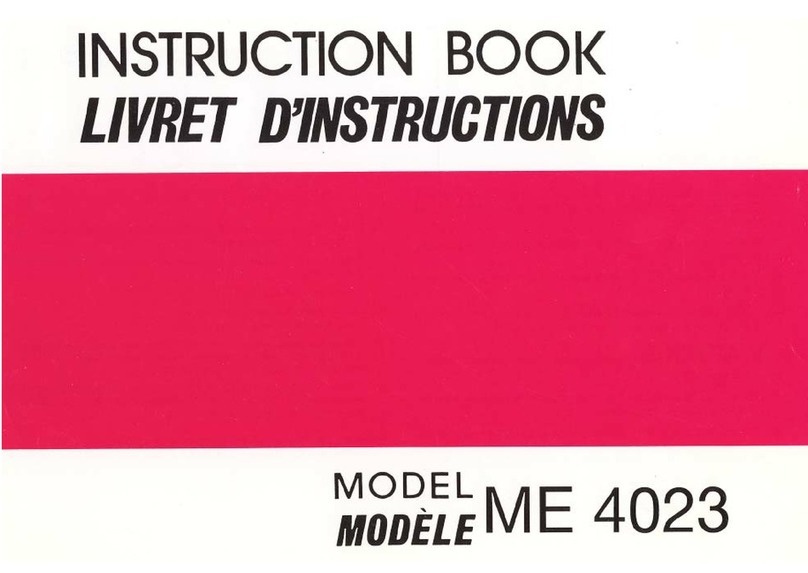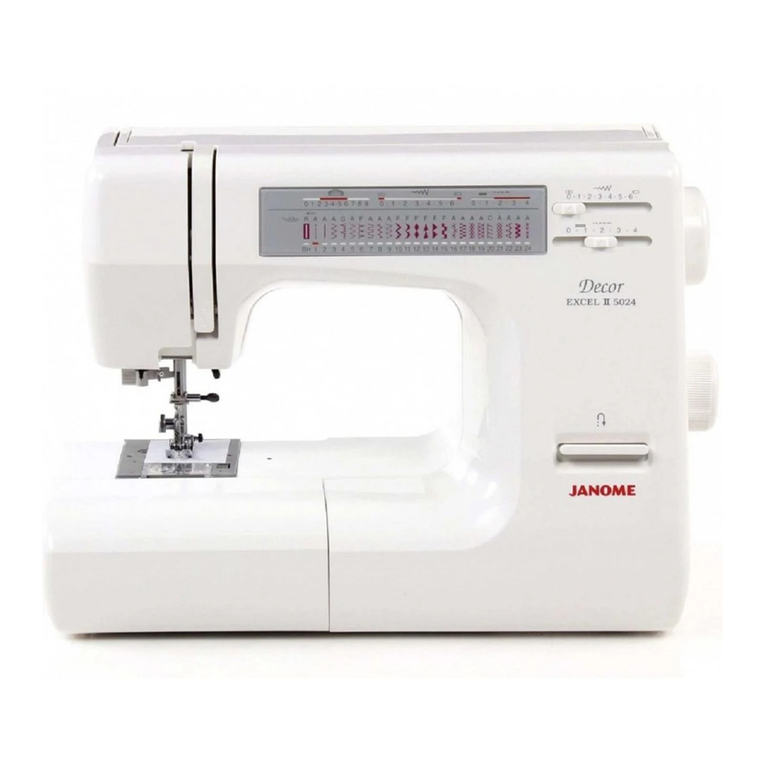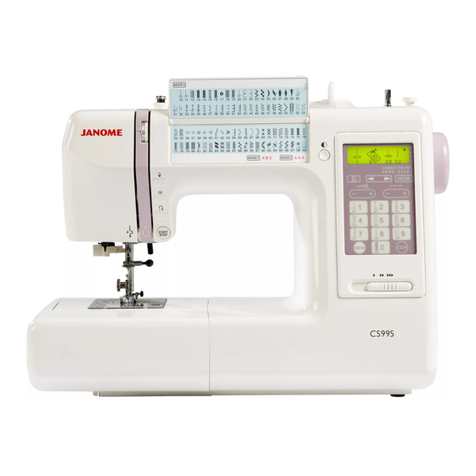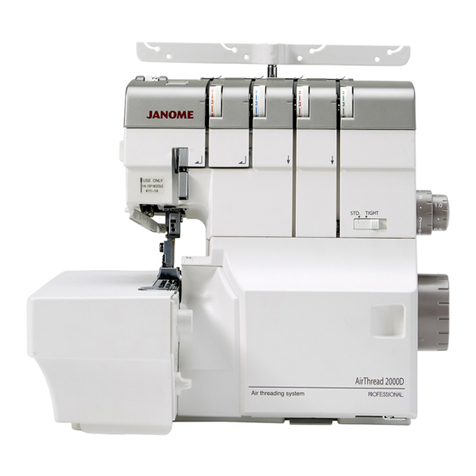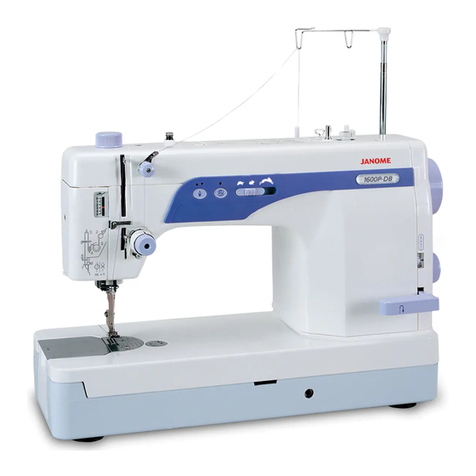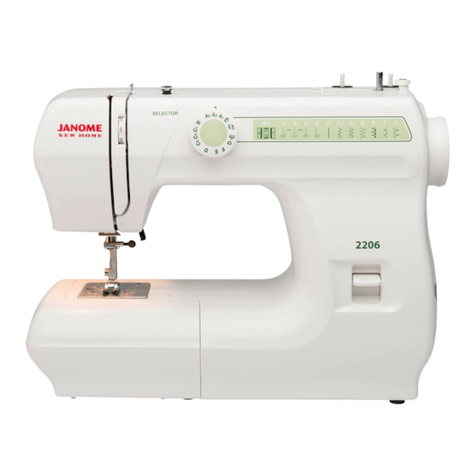WHAT TO DO WHEN
CONDITION
1. Skipping
stitches
2. Fabric not
moving
3.Breaking
upperthread
4.Breaking
bobbin
thread
CAUSE
1. Needle is not inserted
properly.
2. Needle is bent or worn.
3. Incorrectly threaded.
4. Needle or thread is
inappropriate for fabric being
sewn.
5. Sewing on stretch fabric.
6. Inappropriateneedlebar
height.
7. Inappropriate needle to hook
timing.
8. Inappropriate needle to hook
clearance.
1. Incorrect feed dog height.
2. Thread on bottom side of
fabric is jammed up.
3. Feed dog teeth are worn.
1. Initial sewing speed is too
fast.
2. Thread path is incorrect.
3. Needle is bent or dull.
4. Upper thread tension is too
strong.
5. Needle size is inappropriate
for fabric.
6. Needle eye is worn.
7. Needle hole in needle plate is
worn or burred.
1. Incorrectly threaded bobbin
case.
2. Too much thread is around on
the bobbin.
3. Lint is stuck inside the bobbin
holder.
4. Thread quality is too low.
5. Thread is jamming around the
bobbin.
6. Bobbin thread tension is too
strong.
HOWTO FIX
Insert the needle properly.
Change the needle.
Rethread.
Use the recommended sewing
needle and thread.
Use a size 11 blue tip needle.
See mechanical adjustment
“Needle bar height”.
See mechanical adjustment “Hook
timing”.
See mechanical adjustment
“Clearance between needle and
hook”.
See mechanical adjustment
“Height of feed dog”.
Make sure to bring both needle and
bobbin thread under the foot when
starting sewing.
Change the feed dog.
Start with medium speed.
Use the proper thread path.
Replace with a new needle.
Adjust upper thread tension
correctly.
Use appropriate needle for fabric
and thread in use.
Change the needle.
Repair the hole or replace the
needle plate.
Thread bobbin case correctly.
Adjust the pos1tion of stopper.
Clean the hook race.
Change to a high quality sewing
thread.
Clear out the jamming thread.
Adjust bobbin thread tension
correctly.
REFERENCE
P.14
P15
P12.13
P11
P.6
P.7
1
